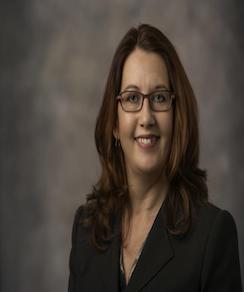This post is part of a new blog series called Transformative Change Initiative (TCI) Featured Evaluator, that includes interviews with members of TCI’s Evaluation Collaborative. This community of evaluators has a wealth of knowledge, experience and insights into evaluation of the TAACCCT grants that are being implementation throughout the United States. Want to be profiled or know someone who would make a great feature? Email us at occrl@illinois.edu.
Name: Jennifer Cleary
Current position: Senior Researcher at Heldrich Center for Workforce Development
Short bio: Jennifer Cleary performs a variety of research, evaluation, and capacity-building activities. Her current work is focused on understanding and improving the responsiveness of higher education to the emerging needs of the labor market and assisting policymakers and educators to build industry-focused workforce strategies. Several recent projects have included evaluations of TAACCCT grant programs. Over her nearly 15 years with the Center, she has also authored several studies on the workforce and education issues associated with emerging industries, including clean energy and other green sectors and she managed New Jersey’s Ready for the Job initiative, a multi-year project to ensure New Jersey educates qualified workers for the state’s key industries. Cleary has over 10 years of experience managing social service programs and spent 5 years coordinating events and projects for nonprofit organizations. Cleary earned her master’s degree from the Edward J. Bloustein School of Planning and Public Policy at Rutgers University.
Questions:
Q. What is the design and predominant methods for your TAACCCT evaluation?
A. It is a multi-method approach based on a comprehensive framework for understanding labor market alignment (LMA) in higher education developed by my colleague and co-presenter, Michelle Van Noy, and I and adapted for a community college/TAACCCT context. As such, the preliminary evaluation approach we developed focuses on understanding how TAACCCT grantees planned and implemented their approach to aligning programs with the needs of employers and students, required stakeholders in TAACCT programs. We use the framework to identify key concepts used in the evaluation approach, including key types of LMA, core activities, and curricular and co-curricular areas where LMA is applied. Our team used qualitative methods such as interviews, site visits and document reviews, as well as quantitative methods including surveys, to conduct two pilot evaluations using all or part of the approach.
Q. What advice do you have for new TAACCCT evaluators?
A. It can be difficult to know what to measure in TAACCCT implementation and outcomes evaluations. The USDOL gives very specific directions for measuring student outcomes, but it is a wide open field for measuring implementation. By identifying a framework that describes the components of the broad activities TAAACCCT supports, evaluators can create more comprehensive evaluations that also contribute to a wider body of scholarly literature in higher education and evaluation.
Q. What questions do you have for others about TAACCCT evaluation?
A. What alternative measures for measuring TAACCCT outcomes have you discovered? What broad frameworks have you relied upon to structure your implementation evaluations?
Q. Do you have tools, reports or other products you are willing to share?
A. We have a working paper on LMA that may be helpful for others to conceptualize new ways of measuring TAACCCT and to help us build upon our preliminary work on an evaluation approach. In addition, we can share the LMA evaluation approach itself, which is included in the paper submitted for this presentation.
Jennifer can be reached at jcleary@rutgers.edu.




Leave a comment